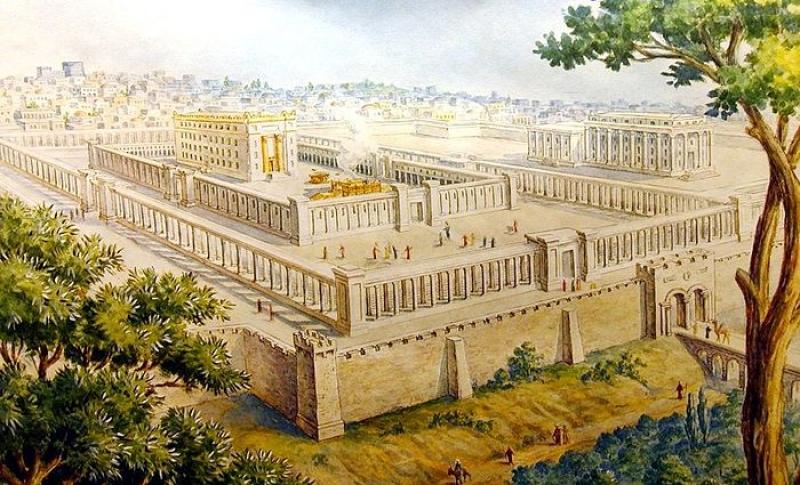

Who built the Jerusalem Temple?
The first temple was built by the Phoenician architect Hiram.
According to Jewish sources, Solomon (970-930 BC) began building the Temple in the fourth year of his reign, in the 480th year after the exodus of the Jews from Egypt, at the beginning of the second month (1 Kings 6:1, 37; 2 Chronicles 3:1, 2). He turned to Hiram, the king of Phoenician Tyre, for assistance. He sent an experienced architect named Hiram Abiff, carpenters and other craftsmen.
The second temple was built thanks to the Persian kings Cyrus the Great and Darius 1.
Let us cite the same Jewish sources.
The Book of Ezra and Nehemiah is a unique source of information about the Jewish community in Judea during the period of Persian rule. There is no doubt about the historicity of the events described in it, which is confirmed by archaeological data and extra-biblical documents. The nature of the relationship between the Jewish leadership, the Persian monarch and local officials is conveyed very accurately; in an effort to strengthen their power at the local level, Cyrus and his successors patronized local sanctuaries and granted the local leadership broad powers and privileges.
In their books, Ezra I and II claim that after the return of the Jews captured by Nebuchadnezzar, the Persian kings Cyrus the Great and Darius the Great made a great contribution to the restoration of the Temple built by Solomon in Jerusalem and its decoration with jewelry and porcelain.
Let us see what the real contribution of the Persian kings was.
The restoration of the Second Temple began during the reign of Cyrus the Great,
According to Ezra. 3:8, the foundation of the Temple was laid in the second year after the return of the exiles (i.e., in 538 BCE), but from Hag. 1:1–4 and 2:18 it follows that construction work did not begin until the second year of Darius' reign (520 BCE).
In 538 BCE, after the conquest of Babylonia, the Persian king Cyrus the Great issued a decree allowing the exiles to return to Judea and rebuild the Jerusalem Temple, which had been destroyed by the Babylonian king Nebuchadnezzar. The decree established the dimensions of the Temple and contained an order for the payment of the costs of its construction and for the return to the Temple of the sacred utensils seized from the Temple of Solomon by Nebuchadnezzar, see Wikipedia.
However, it was not until the second year of the reign of Darius I Hystaspes (520 BCE) that the construction of the Temple was resumed (Hag. 1:15). Darius I Hystaspes personally confirmed the decree of Cyrus and sanctioned the continuation of the work.
The work was completed in the sixth year of Darius' reign, which corresponds to 516 BCE, 70 years after the destruction of the First Temple.
Thus, the Persian kings not only authorized the construction of the Temple, but also financed its construction and enriched the Temple with gifts.
This article contains excerpts from the works ofh
Albert Musheghyan